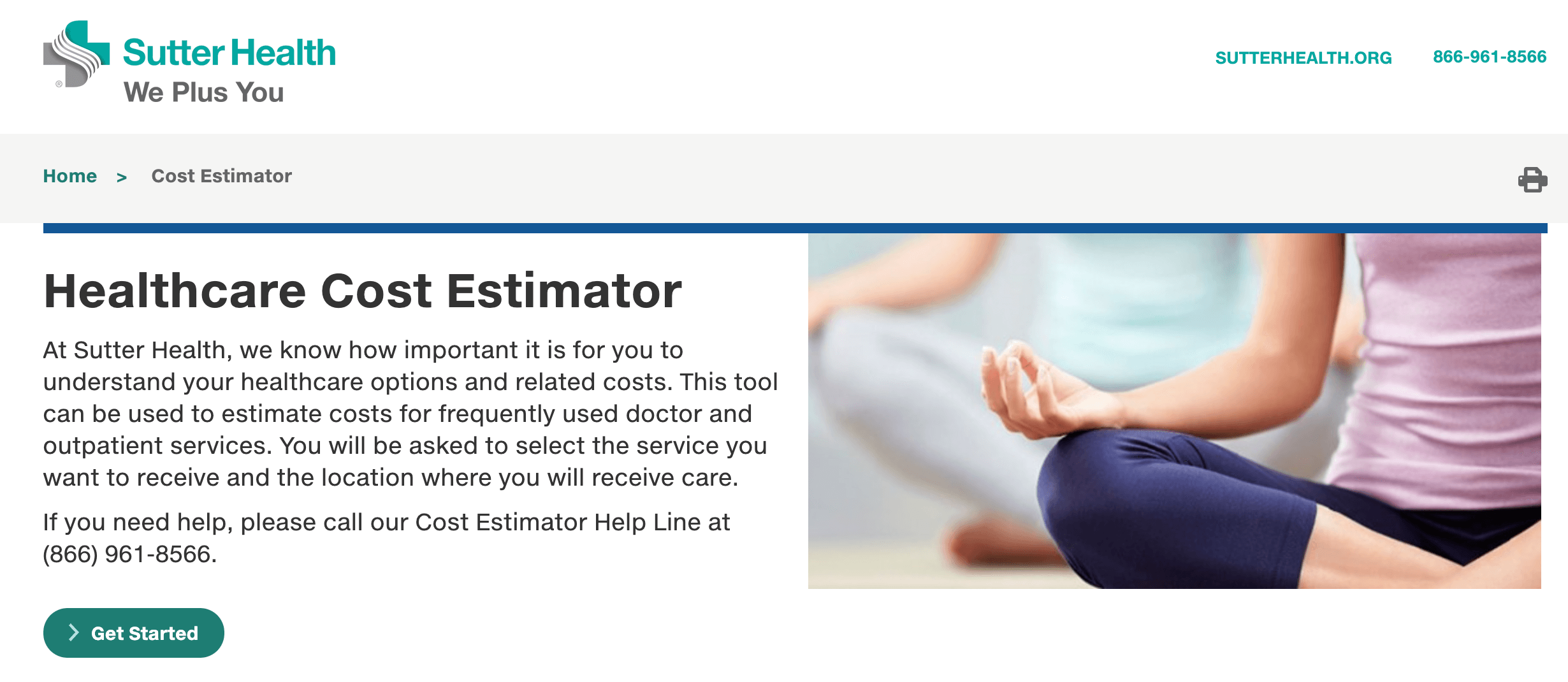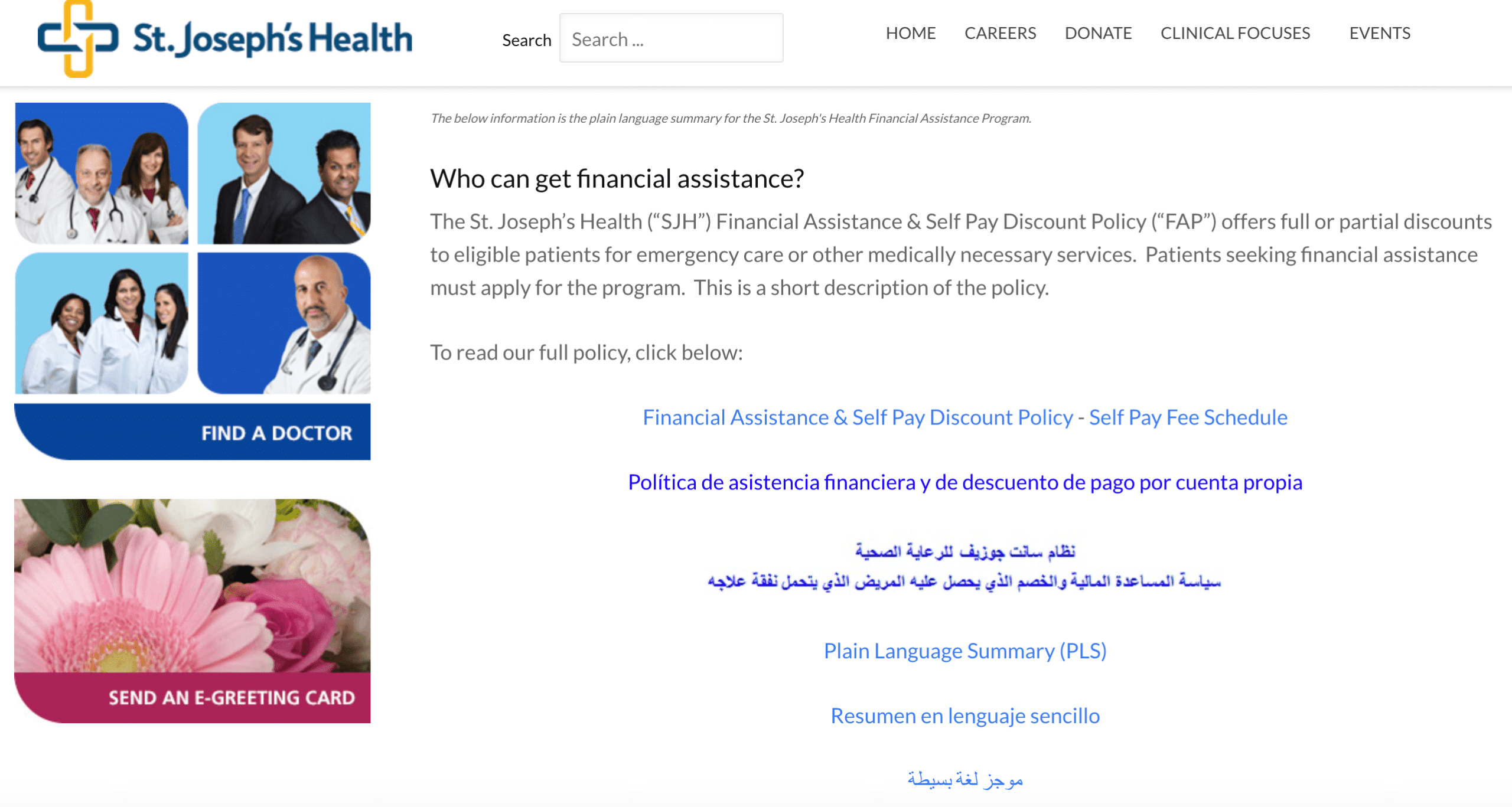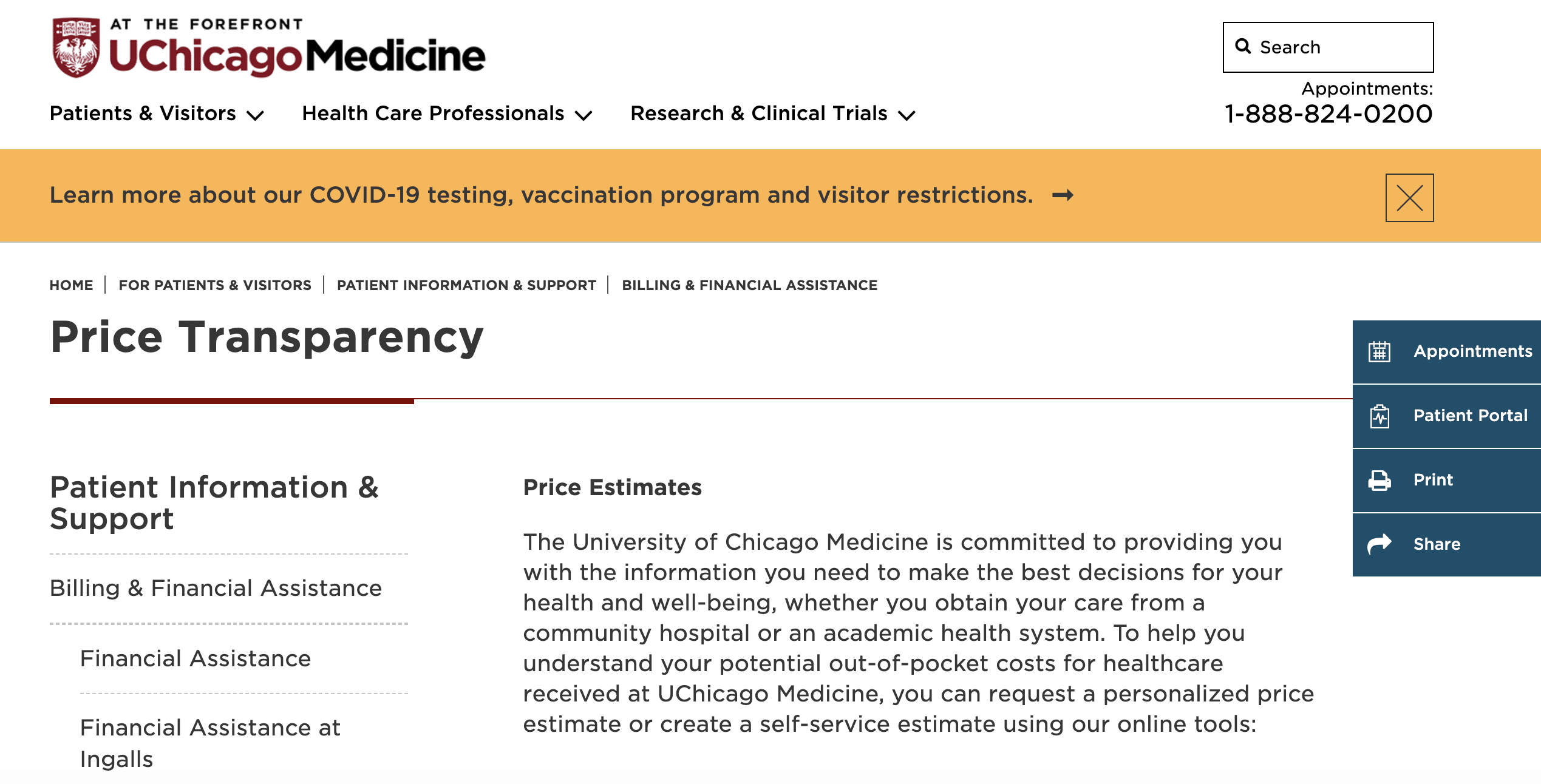
Finally. You can find out the cost of an ultrasound BEFORE getting it, not 3 months later, buried in fine print on a hospital bill. Hospital price transparency helps consumers learn about the cost of elective services before receiving them. This information is supposed to make healthcare more like other industries, where you know exactly how much something costs before you buy it.
But just because hospital price information is available doesn’t mean people are using it. Or even understand it. Marketers are in a unique position to bridge this gap. We’ll show you practical ways to build that bridge, which can pave the way for positive consumer experiences that build brand loyalty.
Just because hospital price information is available doesn’t mean people are using it or understand it. Marketers are in a unique position to bridge this gap. Click To TweetWhat Is Hospital Price Transparency?
Until recently, you would learn the cost of your care weeks after receiving it. First, an explanation of benefits from the insurance company would show charges and out-of-pocket costs. Later, sometimes months later, you’d get a bill.
Bills may uncover potential cost-saving options long after those opportunities have passed. If you went with a provider that was close to home but out-of-network, you might have to pay significantly more. Or you may be on the hook for more than expected if you sought services in-network, but you have a high-deductible plan.
To prevent this sticker shock, the Centers for Medicare and Medicaid Services (CMS) enacted rules mandating hospitals disclose pricing information. In January of this year, a new rule went into effect requiring public reporting of prices for 300 “shoppable services.” These services include lab and radiology tests, surgical procedures and office visits.
Here’s Why It’s Confusing to Consumers
Easy access to price data should make it easier for consumers to shop around and know costs ahead of time. But we’re not there yet. Right now, there’s a lot of confusion.
Here’s why:
1. There are 1,500 price data points for each hospital
CMS requires reporting 5 types of prices for each of the 300 shoppable services. (5 x 300 = 1,500.) This gives consumers more options for learning what their actual cost may be. In addition to listing gross charges, hospitals also need to list payer-specific negotiated rates, self-pay prices and more.
It takes a savvy consumer to navigate this. much. data. Consumers also need to know what service they need and which type of price applies to their situation. Not an easy task! (And quite a time-consuming one.) It’s even more problematic for nearly 1 in 3 adults whose math skills do not extend past basic arithmetic .
2. Hospital prices are rarely the same as a patient’s out-of-pocket cost
If they have insurance, prices may be deeply discounted for some services, while others might not be covered at all. And their out-of-pocket portion varies not only by payer but by plan type. Even self-pay patients rarely end up paying standard charges because many can negotiate a lower rate.
3. Apples-to-apples comparisons are nearly impossible
Price reporting isn’t standardized. Hospitals are free to define terms and display the data however they choose. Some may use different terminology for the same type of price. A gross charge (CMS requirement) may be reported as a “standard rate,” “average rate” or “estimate.”
And the pricing information itself may vary, even within the same system. The rates may differ based on several factors that include special equipment available at a flagship facility or whether medical assistants are involved.
4. It might not be feasible to calculate charges ahead of time
The reported prices are estimates at best and often just a starting point. Patients’ actual out-of-pocket cost can vary significantly. For joint replacement surgery, a person could end up paying more based on:
- The type of joint replacement device
- Whether the surgeon encounters something unexpected, like excess scar tissue
- Additional precautions that need to be taken due to co-existing conditions, like diabetes
5 Marketing Tips for Demystifying Hospital Price Transparency
But marketers can demystify hospital price transparency. A patient’s experience — what keeps them coming back over time — reflects every touchpoint with your organization. This includes learning about prices before receiving services and limiting post-visit sticker shock.
Try these 5 tips to help demystify price transparency:
1. Educate consumers about hospital price transparency
Develop content dedicated to price transparency, explaining in clear terms what it means to patients. Answer their questions: Is a higher price better? Why do I need to worry about price if I have insurance? What if I can’t find a price for a service my doctor says I need?
In addition to price transparency FAQs, consider providing definitions for common terms, like “deductible” and “out-of-pocket cost.”
The Healthcare Financial Management Association offers a guide with examples using consumer-friendly language called Understanding Healthcare Prices: A Consumer Guide.
In addition to price transparency FAQs, provide definitions for common terms, like “deductible” and “out-of-pocket cost.” #marketing #hcmktg Click To Tweet2. Offer pricing tools
St. Luke’s University Health Center is one of many hospitals with a price checker tool. The tool is easy to use and provides personalized cost estimates based on a patient’s insurance. It also enables patients to see how different insurance coverage options affect price.
Sutter Health offers a similar tool with their health cost estimator. After completing 5 simple steps, patients receive estimates. The site also prominently displays the phone number for their cost estimator helpline for users who need additional support.
3. Highlight resources within your organization that can help patients manage costs
High out-of-pocket costs can easily overwhelm consumers. Make sure pricing content includes prominent links to patient financial services. Patients might not know that payment plans or self-pay discounts are available or that members of your team can help patients weigh their options.
Here’s an example from St. Joseph’s Health. Their page includes content in multiple languages.
4. Target patients without health coverage
University of Chicago Medical Center includes a section on their price transparency page for patients without health coverage. This content can help your organization retain patients that might otherwise skip recommended tests and procedures. The section describes options patients might not know they have, like assistance applying for government-funded programs.
5. Use trusted sources to learn more about communicating price information to consumers
The American Hospital Association® developed a toolkit to help hospitals communicate price information to consumers. It includes a self-assessment checklist and case studies. Read: Achieving Price Transparency for Consumers: A Toolkit for Hospitals.
Deepen Patient Trust Through Price Transparency
Potential patients often choose healthcare organizations because of their reputation, service offerings and convenience. Go further and build trust with patients by helping them navigate every step of their care, including cost.
Source: America’s Literacy, Numeracy Problems Don’t End in K-12, Global Test Shows (edweek.org)










